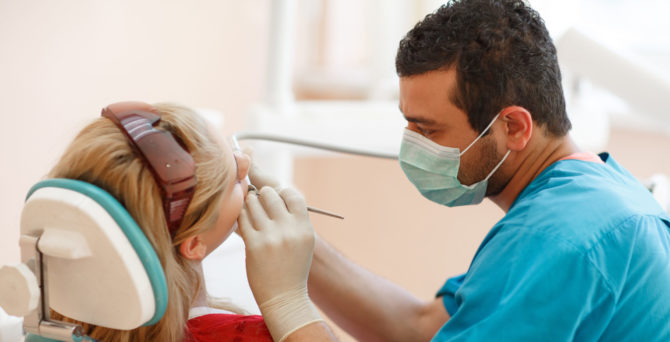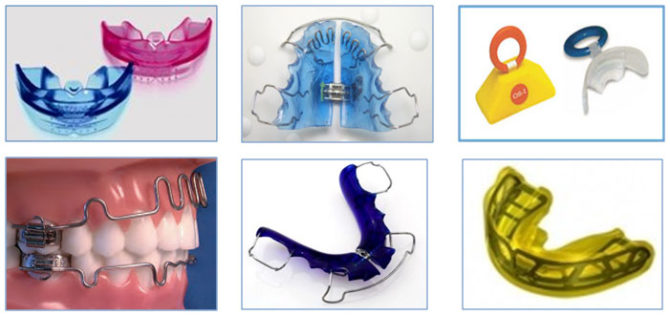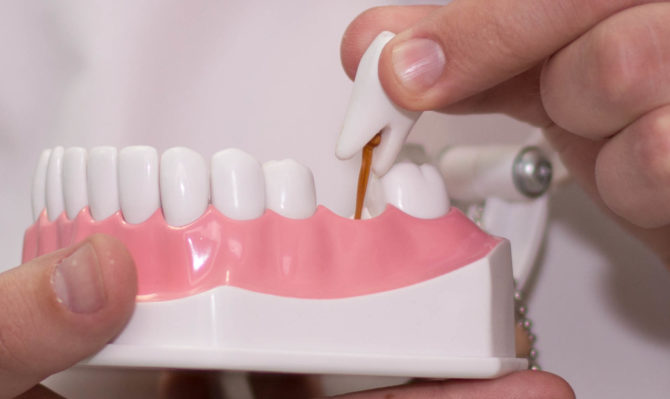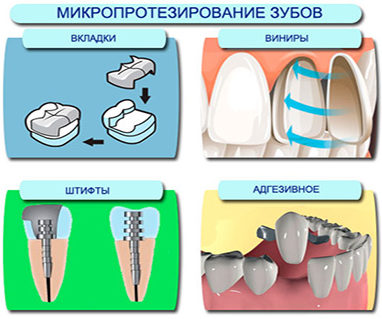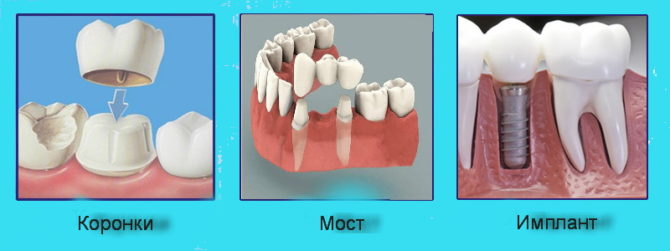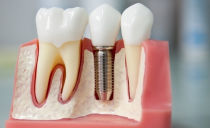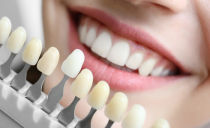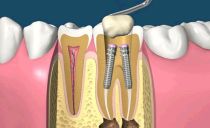Dentist orthopedic dentist: who is it and what does it do
In modern dental clinics, there are many narrow-profile doctors who provide medical care only for a certain type of diseases of the maxillofacial system. The dentist-surgeon performs all necessary operations, the orthodontist corrects the bite using braces, the periodontist treats periodontal inflammation, orthopedic dentist does almost everything related to prosthetics, namely: puts dentures to restore teeth.
This article will tell you more about the most popular dentist - an orthopedist, and also help to understand other dentistry specialties.
Content
Dentists: what are
Dentistry is a fairly vast area of medicine, which is divided into several specific areas: therapy, surgery, orthopedics, orthodontics, periodontics and others. Depending on the chosen qualification, skills and abilities, each doctor has his own area of responsibility and a set of actions.
To understand what kind of dentist to contact in different situations and what is the difference between an orthopedist and orthodontist, surgeon and therapist, you should know the features of their activities.
Specialists often work in the same bundle and closely interact with each other, because the patient may need a set of measures aimed at the complete restoration of the problem area of the oral cavity.
Dentist Therapist
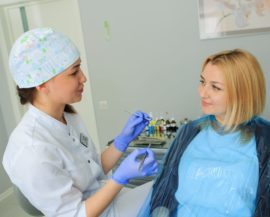 With this dentist, it usually starts. They come to him when he is worried about toothache or other symptoms associated with the maxillofacial region. He carries out diagnostics and initial examination, establishes a diagnosis and prescribes treatment, gives direction to narrow specialists. His competence includes standard problems: caries, infectious diseases and inflammatory processes in the oral cavity.
With this dentist, it usually starts. They come to him when he is worried about toothache or other symptoms associated with the maxillofacial region. He carries out diagnostics and initial examination, establishes a diagnosis and prescribes treatment, gives direction to narrow specialists. His competence includes standard problems: caries, infectious diseases and inflammatory processes in the oral cavity.
Dentist Therapist:
- cleans canals;
- removes nerves;
- establishes seals;
- removes tartar and plaque;
- restores teeth;
- makes oral sanitation before prosthetics or other dental events.
Dental surgeon
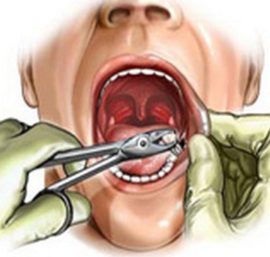 This doctor comes to the rescue if conventional methods of treatment are ineffective and cardinal decisions requiring surgical intervention are needed.
This doctor comes to the rescue if conventional methods of treatment are ineffective and cardinal decisions requiring surgical intervention are needed.
Dental surgeon:
- removes teeth, tumors and cysts;
- eliminates acquired and birth defects;
- reveals foci of abscess and other inflammations;
- prepares the jaw for prosthetics and implantation;
- deals with restoration and plastic surgery of the jaw, as well as any other operations in the oral cavity.
Orthodontist Dentist
This doctor deals with dentoalveolar disorders associated with malocclusion, which he corrects with the help of braces, cap, plates and other devices. These can be genetic, congenital, age-related, acquired due to illness or deformation of the anomaly:
- individual teeth;
- dental arches;
- jaws.
Among dentists there are several important specialties:
- Periodontist. It treats periodontal disease, which is a complex of tissues surrounding the teeth and ensuring their fixation.
- Children's dentist. It differs from an adult dentist, since milk teeth, forming jaws and children's psyche have features.It requires certain knowledge for proper treatment.
- Dental Technician. Engaged in the manufacture of prostheses in dental laboratories.
But the main direction that makes it possible to restore teeth even in cases where other dentists are unable to help is dental orthopedics.
Orthopedics as a field of dentistry
In general, orthopedics is a large branch of the medical system that deals with disorders of the musculoskeletal system, while orthopedics in dentistry is only an independent part of it.
Orthopedics of teeth specializes in resolving problems with the masticatory apparatus, based on the restoration of its function and integrity by installing prostheses. This procedure is called prosthetics.
Dental orthopedics must be consulted if:
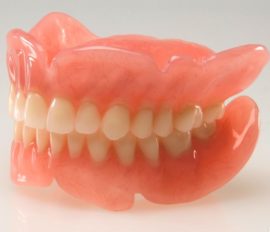 missing teeth - from one to a complete edentulous;
missing teeth - from one to a complete edentulous;- tooth decay is observed - both full and partial;
- increased mobility or sensitivity of the teeth, and also there are other problems with tissues and bones of the jaw - periodontal disease, periodontitis, etc .;
- cosmetic defects occur - the shape, size, color do not correspond or other aesthetic disturbances are noticeable;
- established pathology of the TMJ - temporomandibular joint;
- this orthopedic visit is recommended by another dentist who, when examined or treated, considered such a visit necessary.
Reception in orthopedic rooms is conducted by specialized highly specialized doctors of a high category - orthopedic dentists.
Dentist orthopedist: what does
The duties of this doctor include restoration of the dentition. An orthopedist, due to a consonant name and similar goals, is often identified with an orthodontist. But there is a significant difference between them - the orthodontist corrects crooked teeth and a problem bite using braces, and the orthopedist restores teeth, or rather, the external and internal parts, using prosthetics. Therefore, it is sometimes also called a prosthetist.
An orthopedic doctor or dental prosthetist helps in solving all of the above problems, which are recommended to be addressed to orthopedic dentistry.
What troubles can be eliminated with the help of a dentist:
- Constant feeling of psychological discomfort. The absence of one or several teeth spoils the aesthetic appearance of the face and even its symmetry, which makes a person feel insecure and uncomfortable. The same sensations can cause tooth defects: chips, curvatures, crevices, etc. Especially in the "smile zone". The help of a prosthetist should come in handy here.
- The next nuisance that occurs with tooth failure is no less important - significant masticatory function disorders. It needs to be quickly restored, because it stimulates the natural processes of the entire dentition, restoring its normal functioning: muscle tone, nutrition and blood circulation of bone cells. Normal chewing function is not only useful for health and metabolic processes in the body, but also helps in the fight against periodontal disease.
- The threat of tooth loss due to its continuous destruction. It happens that the tooth has completely healthy roots, but its external bone tissue has already begun to deteriorate, and to such an extent that the filling is already ineffective. To stop the destructive process and save the tooth, avoiding its complete loss, you need to contact orthopedic dentistry.
- Another dental orthopedist treats full adentia, which makes it possible for people who lack all their teeth to lead a normal life.
In all these situations, veneers, inlays, crowns, prostheses or other protective structures will save the situation. Their installation or prosthetics is exactly what an orthopedic dentist does.
Varieties of prosthetics
The choice of prosthetics depends on many factors.Here the role is played by the condition, the number and location of the teeth, the individual characteristics of the patient, pricing and other circumstances. The difference in what the orthopedic dentist does in each individual case is the methods used and the prostheses used.
Micro prosthetics
Suitable in situations where you need to restore a deformed or damaged tooth. The following prostheses are used:
- Veneers. Their doctor puts, if minor defects of the anterior teeth are observed: chips, cracks, curvature, discoloration. Veneers are thin ceramic plates up to 0.7 mm wide, which completely repeat the shape of the tooth, are installed in one go and last up to 10 years.
- Lumineers. They are placed when, for some reason, the patient is contraindicated in veneers. These pads are slightly different from each other. The difference is that lumineers are thinner (0.3 mm), more difficult to get used to, less hide defects, more prone to breakage.
- Tabs They are very similar to fillings, but they have some differences: they last longer, are made of durable ceramics, are able to recreate the dental shape, and are also used when the filling is ineffective.
Removable dentures
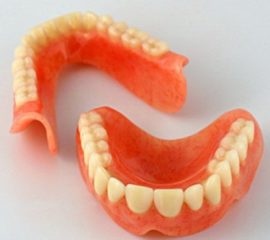 Removable dentures are inexpensive, easy to install, easy to maintain. These prostheses are of several types: lamellar, clasp, suction cups, butterflies. Removable structures are most often used:
Removable dentures are inexpensive, easy to install, easy to maintain. These prostheses are of several types: lamellar, clasp, suction cups, butterflies. Removable structures are most often used:
- with adentia - if there are no teeth on one or both jaws;
- for people of advanced age - other types of prostheses are more expensive and can be poorly tolerated by the elderly body;
- for children - when an early loss of milk teeth can provoke a curvature of the dentition.
Fixed structures
Fixed prostheses are durable and reliable, have an attractive appearance, are made of different materials, which makes it possible to put the prosthesis to people with any financial capabilities. These include:
- crowns - prostheses that are placed in a variety of situations, but most of all they are suitable for frontal single molars;
- bridges are an excellent solution when several teeth are missing in a row;
- implant prostheses - this design will last a lifetime, but it also costs accordingly.
According to the results of this article, it can be concluded that the orthopedic dentist treats all types of tooth loss, up to their complete absence. Today, dentition insufficiency is not a problem, because to solve it you just need to contact one of the many clinics where qualified prosthetists work.

